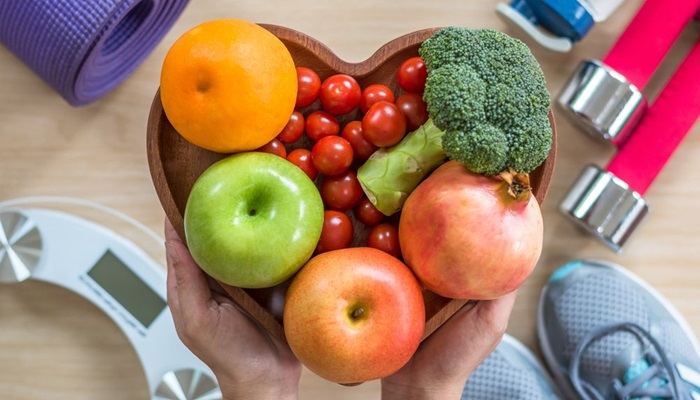High blood pressure, or hypertension, affects millions worldwide and can lead to serious health issues. However, a well-balanced diet rich in specific foods can help manage this condition effectively. Today, we invite you on a culinary journey to explore which foods are best for those with high blood pressure, providing detailed insights into their benefits, usage, and cultural significance.
The Cultural Significance
A Reflection of Tradition
In many cultures, traditional diets have long emphasized the importance of whole, unprocessed foods that promote health and longevity. These diets often include an abundance of fruits, vegetables, whole grains, and lean proteins, all beneficial for managing blood pressure. This tradition underscores the value placed on nutrition and well-being in various societies.
Symbol of Health and Longevity
In traditional medicine, certain foods are recommended for their ability to nourish the body and support cardiovascular health. They are believed to enhance vitality and promote longevity. This belief highlights the importance of natural, nutrient-rich foods in maintaining a balanced lifestyle.
Essential Foods for Managing High Blood Pressure
Preparing Your Kitchen
To incorporate these foods effectively into your diet, consider the following options:
Fruits: Rich in potassium, magnesium, and fiber.
Vegetables: Packed with vitamins, minerals, and antioxidants.
Whole Grains: Provide complex carbohydrates and fiber.
Lean Proteins: Include fish, poultry, beans, and nuts.
Healthy Fats: Found in olive oil, avocados, and fatty fish.
Herbs and Spices: Add flavor without extra salt.
Prepping Ahead
Before starting, prepare all ingredients. Wash and chop fresh produce, soak beans overnight, and measure out spices. Having everything ready ensures a smooth integration into meals and snacks.
Step-by-Step Guide to Incorporating Beneficial Foods
Adding Fruits and Vegetables to Meals
Breakfast Boost: Start the day with a bowl of oatmeal topped with sliced bananas, blueberries, and a sprinkle of flaxseeds. Bananas provide potassium, while blueberries offer antioxidants.
Mid-Morning Snack: Enjoy a handful of baby carrots or celery sticks dipped in hummus. Carrots and celery are low in calories and high in nutrients.
Lunch Addition: Prepare a salad with leafy greens like spinach or kale, cherry tomatoes, cucumbers, and bell peppers. Add a dressing made from olive oil and lemon juice for heart-healthy fats.
Afternoon Treat: Blend a smoothie with spinach, frozen berries, almond milk, and a scoop of protein powder. Spinach provides iron and magnesium, while berries add antioxidants.
Dinner Delight: Serve grilled salmon with a side of quinoa and roasted Brussels sprouts. Salmon is rich in omega-3 fatty acids, promoting heart health.
Creating Heart-Healthy Recipes
Stir-Fried Vegetables: Stir-fry a mix of broccoli, snap peas, and bell peppers in olive oil. Season with garlic, ginger, and a splash of soy sauce. This dish is packed with vitamins and minerals.
Baked Goods: Bake sweet potato fries seasoned with paprika and black pepper. Sweet potatoes are high in beta-carotene and fiber.
Salads: Make a Greek salad with cucumbers, tomatoes, red onions, olives, and feta cheese (use in moderation). Dress with olive oil and balsamic vinegar for added flavor.
Soups: Prepare a lentil soup with carrots, celery, and tomatoes. Lentils provide protein and fiber, supporting heart health.
Enhancing the Experience
Pairing Foods with Other Nutrients
Proteins: Pair fruits and vegetables with lean meats, eggs, or tofu for a balanced meal.
Grains: Combine them with whole grains like brown rice, quinoa, or whole wheat pasta for added fiber.
Nuts and Seeds: Sprinkle chia seeds or walnuts over salads or yogurt for healthy fats and crunch.
Drinks Pairing
Choose drinks that complement the richness of these foods. Herbal teas like hibiscus or green tea can help lower blood pressure. Freshly squeezed juices like beet or pomegranate juice also offer health benefits.
Conclusion
In conclusion, incorporating heart-healthy foods into your diet is more than just a way to manage high blood pressure; it’s embracing a healthier lifestyle. By choosing the right foods, preparing them effectively, adding them to meals, creating recipes, and pairing them with other nutrients, you can achieve better blood pressure control while enjoying delicious and nutritious treats.
Each step of the process, from selecting ingredients to final touches, contributes to the final result—a balanced and flavorful diet that promotes well-being. Serve heart-healthy foods with care, paired with complementary sides and drinks, and you have a meal that brings people together, fostering connections and shared moments.
Through this guide, you not only learn how to incorporate beneficial foods for high blood pressure but also gain insight into their cultural significance. So, gather your ingredients, roll up your sleeves, and embark on this nutritional adventure. Enjoy the journey of flavors and the joy of sharing healthy meals with loved ones. Happy cooking!
By mastering the art of using heart-healthy foods for managing high blood pressure, you open a door to a world of flavors and traditions. Whether enjoyed as a snack or part of a balanced meal, these foods offer a taste of history and innovation, inviting everyone to savor the beauty of culinary heritage. Each bite reflects the principles of simplicity, balance, and harmony that define healthy eating, reminding us of the joys of nourishing our bodies and sharing food with others.
Related topics:


